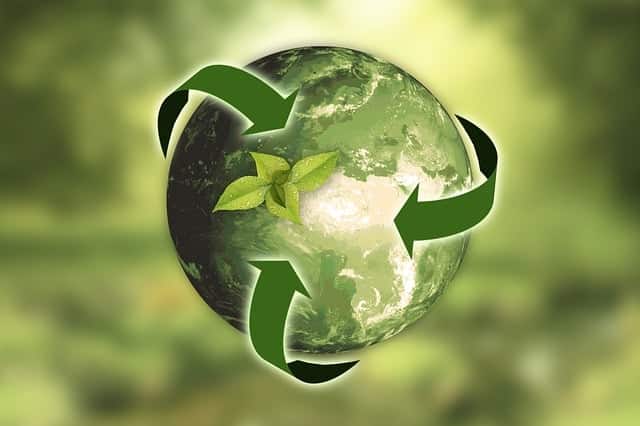Survey Results: Life Science Labs and Sustainable Consumables
Life science labs view sustainable consumables as important but face challenges in purchasing and using them. These results are part of Bioinfomatics’ latest report, “2024 Perceptions of Environmental Sustainability in the Life Sciences.” Bioinformatics, part of Science and Medicine Group (SMG), is a research and advisory firmserving the life science industry. SMG is a leader in market research and digital marketing services.
Sustainability is a hot topic in the laboratory world, prompted by scientists’ concerns, government initiatives, efforts by scientific organizations and corporate sustainability goals. Recent announcements include the Converge collaborative supply chain initiative, founded by My Green Lab, AstraZeneca, GSK, Bristol Myers Squibb and Amgen. In the academic sector, this year, the Royal Society of Chemistry announced the first recipients of its Sustainable Laboratories Grants.
Laboratories are sources of waste, high energy consumption and environmental pollution. Among the biggest offenders are single-use plastics, such as pipette tips and vials; energy-intensive lab equipment, such as fume hods and freezers; and hazardous chemicals, such as reagents and solvents. These products and others are heavily used by life science labs, as many of these labs work with biological samples, complex workflows and high sample volumes.
The most commonly used environmentally sustainable solutions are reusable glassware in place of plasticware and recyclable product containers.
Bioinformatics’ survey of 259 life science lab consumables users was conducted earlier this year and fielded results from users in the pharma/biotech, academia and applied/industry sectors. The survey encompassed respondents in North America, Europe and Asia Pacific.
Some examples of life science labs’ sustainability efforts reported by survey respondents include reuse of glassware, recycling of product containers, environmentally friendly product packaging, organization-wide recycling programs, manufacturers’ recycling programs and biodegradable products. The most commonly used environmentally sustainable solutions are reusable glassware in place of plasticware and recyclable product containers.
Support for Sustainability
Not surprisingly, environmentally sustainable consumables are preferred by many of the life science labs surveyed. More than 80% of those surveyed believe that incorporating environmentally sustainable products in lab environments is either “highly” or “somewhat” important. Similarly, over 80% are willing to pay a premium of 5% or more for sustainable life science consumables.
Nonetheless, factors other than sustainability are considered “highly important” by the majority users surveyed when evaluating consumable purchases. Among these are product quality, price and previous experience with a product. When purchasing sustainable consumables, over 40% of survey respondents describe their approach as using sustainable consumables “when prices are reasonable.” In addition, another criteria cited by over 40% is using them when they are available “from brands I trust.”
Even though labs are adopting sustainable alternatives, these alternatives have room for improvement. Examples of sustainability in consumables where improvement is needed, according to survey respondents, are plasticware, product packaging, shipping packaging and reagents. The sustainability effort that the greatest percentage of respondents think suppliers are not doing well is not making it easier to recycle sustainable products.
Suppliers and Sustainability
Suppliers of life science consumables play an important role in enabling sustainability purchases, according to the survey. But over 50% of those surveyed think that suppliers of life science consumables as a whole are “not doing well” in their overall sustainability efforts. For example, a majority of respondents perceive suppliers are “not doing well” in areas such as making recycling of sustainable products easier and in educating consumers on sustainable product options. The area where the highest percentage of respondents view suppliers as “doing well” are improved packaging/shipping. In general, over a quarter of respondents believe that the implementation of environmental sustainability efforts provides a “significant increase” in a company’s reputation.
However, over 50% of respondents have seen a “moderate increase” in suppliers’ sustainability efforts over the last two years.
To make improvements in their sustainable lab consumables offerings, the most impactful areas for suppliers, according to survey respondents, would be making recycling easier and improving the quality of the environmentally sustainable products offered. However, over 50% of respondents have seen a “moderate increase” in suppliers’ sustainability efforts over the last two years.
Among the top-rated suppliers for the sustainability of their life science consumables in the survey are Thermo Fisher Scientific, MilliporeSigma/Merck KGaA Life Science and Eppendorf. These were also among the major suppliers of lab consumables to the life science labs surveyed.
Thermo Fisher reported that in 2023 it offered 348 ACT-labeled products. Nonprofit organization My Green Lab’s ACT (Accountability, Consistency and Transparency) Label means a product’s impact, operations and end-of-life have been verified by a third party as sustainable according to Environmental Impact Factor criteria. Eppendorf offers more than 150 ACT-labeled products. Merck Life Science offers 2,500 “Greener Alternative Products,” including 30 greener solvents, according to the company.
Sustainability Challenges
The biggest challenges to using more sustainable life science consumables cited by survey respondents are high costs and poor product quality. Other challenges include product availability and risk of inconsistency. The majority of respondents who no longer use manufacturers’ recycling programs and biodegradable plastics cited high costs in particular as a deterrent.
While progress has been made, it appears that increasing the sustainability of life science consumables is still at an early stage. Promising developments include energy efficiency, bioplastics and ambient-temperature shipping.




